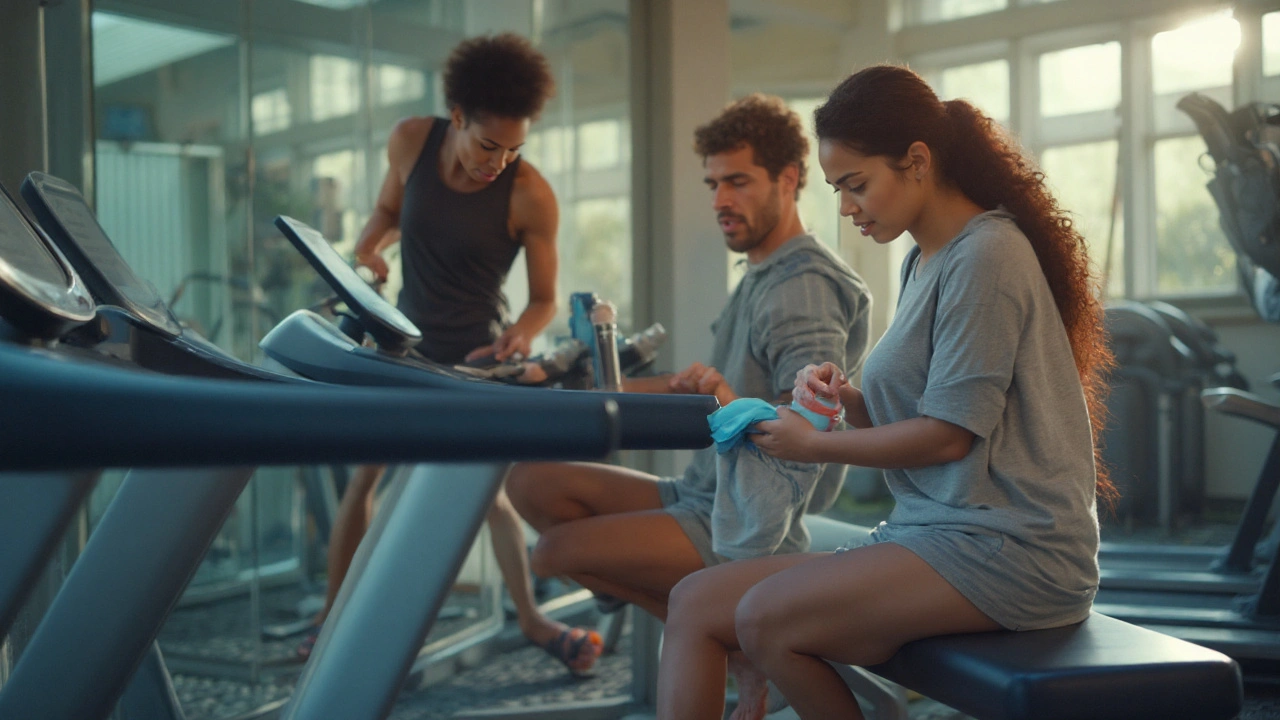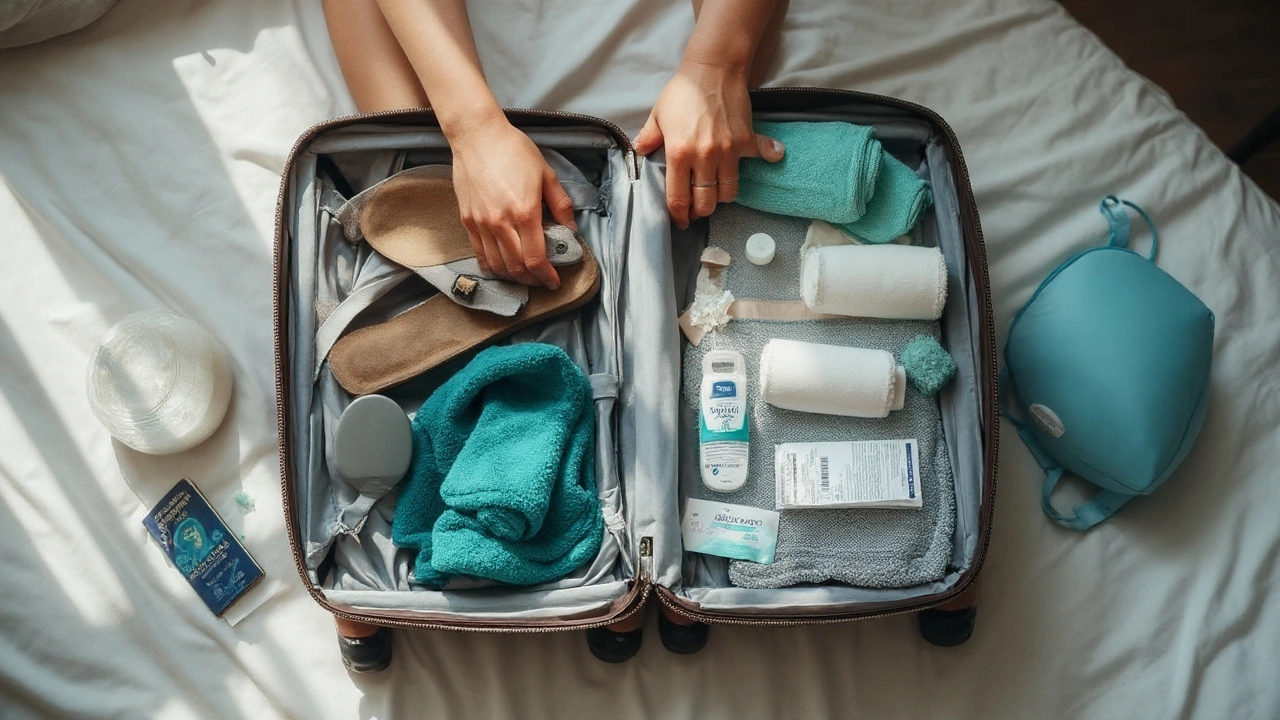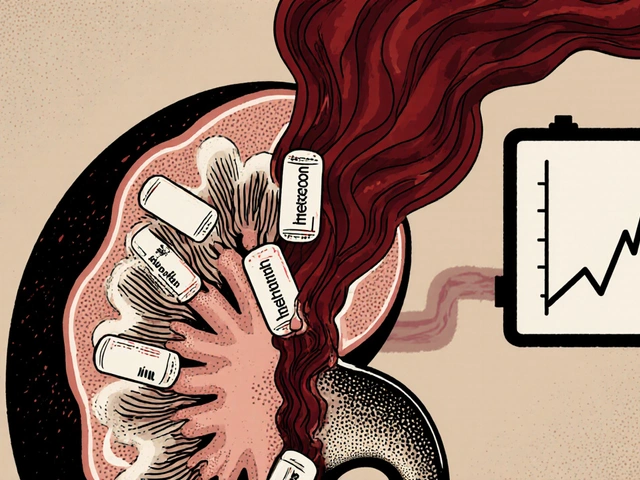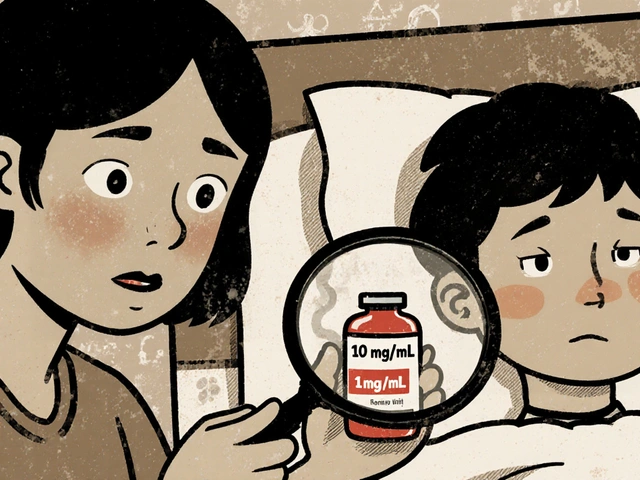Best Ringworm Prevention Strategies for Travelers: Practical 2025 Guide
One patch can mess up a trip: ringworm spreads fast in warm, shared spaces like hostels, gyms, and pools. The fix is not fancy. It is a small set of habits and a few smart items in your bag. This guide gives you a simple, field-tested plan to avoid fungal hassles on the road, plus what to do if you spot a rash early so you stay in control, not itchy.
Key takeaways and how to choose the right prevention plan
TL;DR
- ringworm prevention for travelers is about three things: keep skin dry, create barriers in shared spaces, and treat early if you see a patch.
- Wear flip-flops in communal showers, never share towels or hair brushes, and change out of sweaty clothes fast. These three moves do most of the heavy lifting.
- Pack an antifungal powder for feet/groin, a small tube of 1% clotrimazole cream, quick-dry socks, and a lightweight shower sandal. That kit weighs almost nothing and saves trips to a chemist abroad.
- If you have frequent athlete’s foot or you are immunocompromised, use powder daily in high-heat climates and wash socks at 60°C when you can.
- Spotted a ring-shaped, itchy patch? Start topical antifungal twice daily and keep the area dry. If there is no improvement in 7-10 days, or it is on scalp/beard, get medical care.
What drives your risk?
- Environment: Hot, humid, and shared (hostels, gym floors, mats, pool decks) increases risk.
- Activities: Contact sports, surfing (rental suits), hiking in sweaty gear, daily gym sessions.
- Personal factors: History of tinea (ringworm/athlete’s foot/jock itch), diabetes, immunosuppression, tight clothing, synthetic non‑breathable fabrics.
Decision criteria to tailor your plan:
- Humidity and heat: The stickier the climate, the more you focus on dryness (powders, extra socks, quick showers, airflow).
- Shared surfaces: The more you use communal showers or mats, the more barriers you use (flip-flops, personal towel, mat towel).
- Laundry access: If hot washes are limited, rotate clothing, use quick-dry fabrics, and bag dirty items separately until you can wash hot.
- Skin sensitivity: If you react to fragrances or powders, choose fragrance-free, talc-free antifungal products and use breathable fabrics first.
Credible guidance to anchor this plan: NHS guidance (2024) stresses keeping skin clean and dry, not sharing personal items, and early topical treatment. CDC materials (2024) advise sandals in locker rooms, washing clothes/towels, and prompt treatment to cut transmission. The British Association of Dermatologists (2022) notes that 1% clotrimazole, miconazole, or terbinafine creams are first-line for skin ringworm, while scalp involvement needs medical treatment.

Your on-the-road prevention playbook
Use this in three layers: daily routine, gear, and what to do after a risky exposure.
Daily routine that actually works:
- Before you head out: Dust feet and groin with an antifungal powder if it is hot or if you are prone to tinea. Pull on breathable socks and underwear.
- During the day: Swap out of sweaty tops and socks as soon as practical. Air feet at breaks. If you hit a gym or beach, plan a dry change right after.
- Showers and floors: Always wear flip-flops in shared showers and on pool decks. Use your own towel and hang it to dry wide and fast (microfiber helps).
- Night reset: Rinse off sweat, dry skin thoroughly (pat, do not rub), especially between toes and groin, then use powder if needed. Sleep in dry, loose fabrics.
Quick packing list (fits in a zip bag):
- Lightweight shower sandals (rubber or EVA).
- Antifungal powder or spray (miconazole or tolnaftate for feet/groin).
- 1% clotrimazole or terbinafine cream for early patches.
- 2-3 pairs quick-dry socks (merino or synthetic blend) and breathable underwear.
- Microfiber towel or a personal travel towel; a small laundry bag and a few mesh bags for rotation.
- Travel detergent sheets and a few large zip bags to isolate wet or dirty gear.
Rules of thumb (easy to remember):
- Three Ds: Dryness, Distance, Disinfect. Keep skin dry, keep distance from shared wet surfaces, and clean what you can.
- Change fast: Anything sweaty should be off your skin within 30 minutes once you stop moving.
- 60°C beats vibes: When you can, wash socks/underwear at 60°C. If you cannot, wash warm with detergent, then sun-dry fully; rewash hot later.
- Feet first: If you prevent athlete’s foot, you cut a major source of spread to groin and body.
How to handle risky exposures:
- Shared shower without sandals: After, wash feet with soap, dry between toes, apply antifungal powder, and wear clean socks. Repeat for two days.
- Borrowed towel or clothing: Wash the skin area with soap and water, dry well, and switch to clean clothes. Launder the item hot if possible.
- Rental wetsuit or gear: Rinse exposed skin with clean water and soap, dry fully, and consider powder in friction zones.
- Animal contact (kittens, shelter visits, farm stays): Wash hands and forearms, avoid touching your face, and check skin over the next week; ringworm from animals is common.
What early ringworm looks and feels like:
- Body (tinea corporis): Round or oval red patch with a clearer center and a slightly raised, scaly edge; may itch.
- Feet (tinea pedis): Itchy, peeling skin between toes or on soles; can crack.
- Groin (tinea cruris): Red-brown rash with a well-marked edge in groin folds; itches, worse after sweat.
- Scalp/beard (tinea capitis/barbae): Scaly patches with broken hairs, often tender; needs medical treatment, not just creams.
Start treatment at first sign:
- Clean and dry the area.
- Apply a thin layer of 1% clotrimazole or terbinafine twice daily, extending 2 cm beyond the visible edge.
- Keep treating for 1 week after the rash clears to prevent relapse.
- Switch to loose, breathable fabrics and change anything that rubs.
Disinfection and laundry without ruining your trip:
- Surfaces: For non‑porous surfaces you control (e.g., your shower sandal, reusable razor handle), a diluted household bleach (about 1:10) is effective against dermatophytes; rinse after. Alcohol wipes and many quats are less reliable against fungal spores.
- Clothes and towels: Hot wash at 60°C is best. If the hostel offers only cold, use a full detergent dose, run a warm cycle if possible, and dry completely in sun or a hot dryer.
- Shoes: Rotate pairs to let them dry 24 hours. Use antifungal powder inside shoes if you are prone to athlete’s foot.
- Bagging: If hot washing is not possible for a few days, bag used socks/underwear separately and keep them dry; do not leave them damp in a pack.
What products actually help?
| Item | Primary benefit | Best for | Trade‑offs |
|---|---|---|---|
| Flip‑flops/shower sandals | Barrier from contaminated floors | Hostels, gyms, pools | Bulky if very rigid; choose lightweight EVA |
| Antifungal powder (miconazole/tolnaftate) | Keeps skin dry; reduces fungal growth | Feet and groin in hot climates | Can be messy; check for fragrance sensitivity |
| Topical cream (clotrimazole 1% or terbinafine) | Treats early patches | Any new ring-shaped rash on body | Needs twice-daily use for 2-4 weeks |
| Quick‑dry socks (merino/synthetic blend) | Moisture control | Hiking, daily city miles | Costs more than cotton; wash regularly |
| Microfiber travel towel | Fast drying; personal barrier | Hostels, beach, gyms | Feels different than cotton |
Why these picks? They match the highest-risk moments: wet floors, trapped sweat, and delays in drying. CDC guidance highlights sandals in shared showers and washing personal items. NHS advice emphasizes dryness and not sharing towels. The BAD underscores early topical treatment for skin tinea.
Common pitfalls to avoid:
- Walking barefoot on hotel carpets because they look clean. Fungi do not care about appearances.
- Re-wearing damp socks to save laundry tokens. That is how athlete’s foot bounces back.
- Stopping cream as soon as it fades. You need about a week more to avoid relapse.
- Using thick occlusive ointments on sweaty areas. You want breathability, not a greenhouse.

Scenarios, trade‑offs, and quick answers
Best for / Not for (choose your mix):
- Backpackers in Southeast Asia rainy season: Best for daily powder use, flip-flops everywhere, two pairs of quick-dry socks on rotation. Not for heavy leather shoes that never dry.
- Business travelers with one carry-on: Best for a small clotrimazole tube and a thin pair of sandals tucked in the laptop sleeve. Not for skipping laundry; plan a midweek wash.
- Families with kids sharing bunks: Best for personal towels and sandals, a family-size powder, and teaching kids not to share hairbrushes. Not for communal plush toys that stay damp.
- Gym rats abroad: Best for bring-your-own towel, wipe down your mat, powder feet post-shower. Not for barefoot sauna walks.
- Immunocompromised travelers: Best for extra caution on shared surfaces, early medical contact if any rash appears. Not for delaying care if scalp or widespread rash starts.
Scenarios and trade‑offs:
- No hot wash available for a week: Trade‑off is bulk vs hygiene. Solution: bring extra socks/underwear, wash in warm soapy water daily, sun-dry fully, and bag until you can hot-wash later.
- Powder irritates your skin: Switch to a fragrance-free antifungal spray or focus on fabric choices and frequent changes. Dryness still wins.
- Minimalist packer: Prioritize sandals and a tiny antifungal cream. Those two cover the biggest risks and the earliest fix.
Mini‑FAQ
- Can I catch ringworm from hotel sheets? Possible but less common than from wet floors and shared towels. If sheets look damp or musty, ask for a change; sleepwear adds a barrier.
- Do UV travel wands kill ringworm? They are unreliable in real-world use due to distance and angle. Do not depend on them.
- Is tea tree oil enough? Evidence is mixed and products vary. Stick to proven antifungals for treatment.
- Can I swim if I have a patch? Covering a small patch with a waterproof dressing reduces spread, but many pools ask you to wait until treatment has started and lesions are covered or healed. Check local rules.
- When should I see a doctor? If it is on the scalp or beard, covers large areas, if you have diabetes or are immunocompromised, or if there is no improvement after 7-10 days of proper topical use.
- How long do fungi survive on surfaces? Dermatophytes can live for weeks on damp items. Dryness and cleaning break the chain.
- Do I need oral antifungals to prevent ringworm? Not for prevention. Oral meds are for specific, diagnosed cases (like scalp). Do not self-start them.
- Are kids at special risk around pets? Yes. Kittens and puppies can carry ringworm. Wash hands after petting and watch for circular lesions.
Checklists you can screenshot:
Morning:
- Dry feet and groin fully; powder if hot.
- Clean socks and underwear; breathable fabrics.
- Flip-flops in your day bag if you will use a gym or pool.
After activity:
- Shower with sandals; use your towel.
- Change out of sweat within 30 minutes.
- Air shoes; rotate pairs if possible.
Night:
- Skin fully dry before bed; light powder if needed.
- Hang towel wide; do not fold damp.
- Spot-check skin; start cream at the first ring.
Evidence notes (plain English):
- NHS (2024) and CDC (2024) both stress sandals in shared showers, not sharing personal items, and keeping skin dry to reduce tinea spread.
- British Association of Dermatologists (2022) patient leaflets list clotrimazole, miconazole, and terbinafine creams as first-line for skin tinea; scalp needs oral therapy.
- Hot water at 60°C with detergent is recommended in infection control manuals for textiles that can tolerate it; complete drying matters as much as washing.
Next steps / Troubleshooting
- If you notice a new ring-shaped rash: Start clotrimazole 1% twice daily, keep area dry and uncovered when possible, and avoid scratching. If not improving after 7-10 days, seek care.
- If athlete’s foot keeps returning: Treat feet fully first, powder daily in hot climates, wash socks at 60°C, and consider replacing old insoles.
- If you cannot access antifungals immediately: Keep the area dry, reduce friction with breathable fabrics, and get cream at the next pharmacy stop.
- If you travel with kids: Label towels, teach no-sharing rules for brushes and hats, and do quick skin checks at bedtime.
- If you are immunocompromised: Be stricter with barriers in shared spaces, start treatment early, and arrange telehealth if lesions spread or involve scalp.
I travel from Birmingham with the same compact kit every time: sandals, powder, tiny tube of cream, two spare pairs of socks. Boring, yes. Also the reason I spend my days exploring, not scratching. Keep it simple, and you will be fine.






14 Comments
Abhishek Kumar
August 25 2025Honestly, the guide is fine but nothing groundbreaking.
hema khatri
August 26 2025Wow!!! This is exactly what every Indian traveler needs-quick, practical, and no nonsense!!! Keep those flip‑flops ready and the powder handy, brother!!!
Jennell Vandermolen
August 26 2025Great job laying out a clear plan; I especially appreciate the step‑by‑step daily routine-it makes it easy for newcomers to follow without feeling overwhelmed.
Mike Peuerböck
August 27 2025Indeed, the systematic approach outlined herein reflects a commendable synthesis of evidence‑based dermatological guidance and field practicality; by integrating antiseptic barriers, moisture‑wicking fabrics, and prompt pharmacologic intervention, travelers can substantially mitigate the epidemiological risk of dermatophyte transmission while preserving the joie de vivre of exploration.
Simon Waters
August 28 2025While the guide sounds helpful, remember that many of those “recommended” antifungal powders are sponsored by big pharma firms eager to push products onto unsuspecting backpackers.
Vikas Kumar
August 28 2025Exactly, these foreign companies want us to rely on their chemicals instead of traditional Indian remedies like neem oil, which have proven antifungal properties for centuries.
Celeste Flynn
August 29 2025For those heading to humid climates, a tip: apply antifungal powder not just after showering but also before putting on socks; this creates a micro‑dry environment that discourages fungal spores from colonising the skin.
Shan Reddy
August 29 2025Note that the powder should be applied to clean, dry skin and allowed to settle for a minute before donning socks to avoid clumping.
CASEY PERRY
August 30 2025The recommended regimen aligns with CDC guidelines: barrier protection, moisture control, and early topical therapy reduce infection probability by approximately 70%.
Naomi Shimberg
August 30 2025While the statistics are optimistic, one must consider that individual susceptibility varies greatly; thus, universal claims of a 70% reduction may overstate efficacy in immunocompromised cohorts.
kenny lastimosa
August 31 2025Travel, in its essence, is a pilgrimage of the self, a continual negotiation between the desire for discovery and the constraints of the corporeal vessel that carries us forward. When we overlook the humble skin, we betray a fundamental truth: the body is both a passport and a prison, granting access to new horizons while harboring vulnerabilities that can anchor us to discomfort. Ringworm, though seemingly trivial, epitomises this duality-an invisible invader that can tether a traveler to a chair of incessant scratching and medical appointments. The guide’s emphasis on dryness and barriers reflects a deeper philosophical stance: that prevention is an exercise in foresight, a proactive cultivation of conditions that preclude chaos. Yet foresight is not merely a tactical maneuver; it is an acknowledgment of our interconnectedness with the environments we traverse. By donning flip‑flops in communal spaces, we symbolically respect the shared nature of those ecosystems, refusing to impose our personal disorder upon the collective. The act of carrying antifungal powder becomes more than a practical measure; it transforms into a ritual of self‑care, a silent affirmation that we owe ourselves the responsibility to preserve health amidst uncertainty. Moreover, the recommendation to treat early patches underscores the principle of timely intervention, mirroring the philosophical tenet that small, attentive actions can avert larger calamities. In this vein, the guide serves as a microcosm of ethical travel, where each precaution mirrors a moral choice to minimise harm to both self and others. Even the suggestion to rotate shoes and allow them to dry embodies patience, reminding us that haste often breeds neglect. One might argue that such meticulousness detracts from the spontaneity cherished by wanderers, yet true spontaneity is only sustainable when the basic scaffolding of wellbeing is intact. The inclusion of laundry protocols further illustrates the balance between freedom and responsibility, urging travelers to harmonise their desire for movement with the disciplined upkeep of their gear. As we contemplate the broader implications, we recognise that the guide’s strategies are not merely a checklist but a philosophical framework for navigating the tension between exploration and preservation. Ultimately, embracing these practices allows the traveler to transcend the fragility of the flesh, forging a path where curiosity is unimpeded by preventable ailments. In doing so, we honour both the spirit of adventure and the prudence required to sustain it over the long journey.
Heather ehlschide
September 1 2025Your philosophical take beautifully ties health habits to the larger journey; I’ll definitely keep the “ritual of self‑care” mindset next time I’m on the road.
Kajal Gupta
September 1 2025Okay folks, picture this: you’re chilling after a day of trekking, and your feet feel like a sweaty swamp-no thanks! Toss on those snazzy EVA sandals, sprinkle that magic powder, and boom-you’ve got happy feet ready for the next adventure, no drama.
Zachary Blackwell
September 2 2025Just make sure those “snazzy” sandals aren’t secretly embedded with nano‑trackers from the tourism industry; otherwise you’re trading one invasion for another.